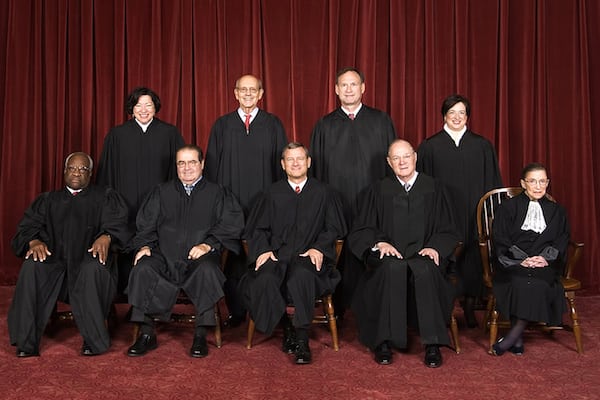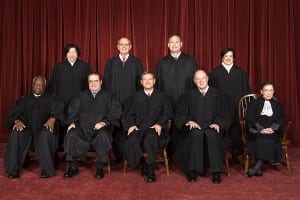
 It's been a busy two days for the U.S. Supreme Court. On June 25, the court ruled that under the Affordable Care Act the federal government can provide nationwide tax subsidies to help people buy health insurance, cementing President Obama's signature health care law for the foreseeable future. This morning, the Supreme Court ruled that the U.S. Constitution "guarantees a nationwide right to same-sex marriage," as reported in the New York Times.
It's been a busy two days for the U.S. Supreme Court. On June 25, the court ruled that under the Affordable Care Act the federal government can provide nationwide tax subsidies to help people buy health insurance, cementing President Obama's signature health care law for the foreseeable future. This morning, the Supreme Court ruled that the U.S. Constitution "guarantees a nationwide right to same-sex marriage," as reported in the New York Times.
Obamacare and same-sex marriage have been two of the most heated topics of national conversation in this decade, and in the wake of these two Supreme Court decisions, brands and nonprofit organizations may feel that they must somehow participate in these conversations. One way or another, these decisions affect most of their employees, customers and members.
If you're a brand communicator and are weighing whether or how to have your senior leaders comment on these two decisions, consider these key lessons from Christopher Rieck, director of media relations at law firm McDermott Will & Emery. (These tips are adapted from PR News' Media Relations Guidebook Vol. 2).
- Start small. Begin by leveraging your closest media contacts. Pitch those reporters who know you best to speak with your executives on the topic you've identified. It will be easier to generate these first interviews, which should give your executives a relatively safe, known platform for airing their messages. These interviews will also force you to think through your messages.
- Prove your credentials. As you begin to target national media, make certain that you are giving reporters very compelling reasons to pick your executive over the scores of other choices they have for commentary. Do they have some other specific credential from a previous job that gives them unique insights into the issue? Say that. Don't bury the reporter with lots of irrelevant detail from their resume.
- Make introductions. If you know that a reporter is likely to cover an issue in the months ahead, reach out to them for a possible meeting now.
- Manage the clock. National reporters are among the most time-pressed individuals on the planet. Hundreds of emails are on their screen. Which ones are they going to open, the one that says "Supreme Court Sources Available" or the one that says “What the Supreme Court Got Wrong”? Use the subject line to make your executive compelling in eight words or less. Include quote attributions in your pitch wherever possible for even quicker strikes on extremely fast moving issues.
- Know what's coming next. Strive to become as much of an expert on the issues as the reporter you are targeting. Make sure you're aware of where the debate stands at any given moment. If you can reasonably anticipate that there will be a major development in the story tomorrow morning, make sure you have identified and prepared your spokespeople for such interviews today. And, if they're not ready to comment, don't put them out for commentary. Wasting a journalist's time can be fatal to your efforts.
- Be first. When it comes to national news, if you haven't reached out to your target reporter by 9:30 a.m. or so, it may not be worth it. Tier-one media reps chasing the day's news story will not wait around for sources to present themselves. You need to reach them before they are in the throes of reporting the news. This generally means before 9:30 a.m. Even better would be to approach them in the late afternoon the day before the news hits, when they're not so busy.
- Demonstrate your knowledge. There are many ways to do this, but one of the most effective can be a media webinar. You invite top media targets to attend a free webinar on the potential impact of whatever issue you are following in an on-the-record format. This approach does several things: It shows top reporters just how deep your company's knowledge of the issues is and provides quotable insights for any stories they may be working on or planning. A well-attended media webinar also shows top media that their competitors see your company as a valuable news source—an invaluable asset.
Follow Steve Goldstein: @SGoldsteinAI
